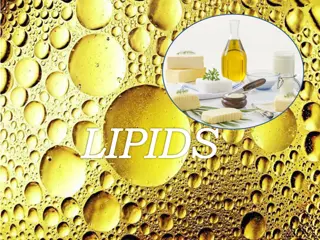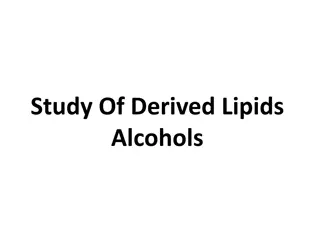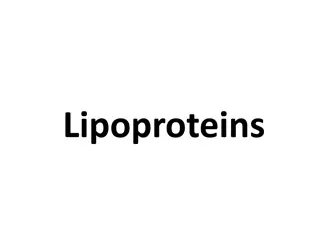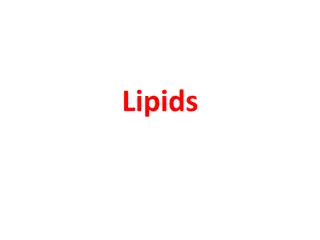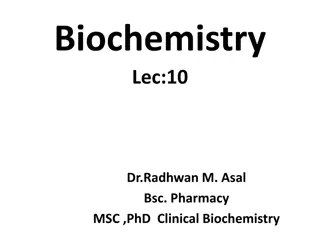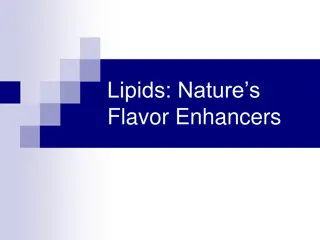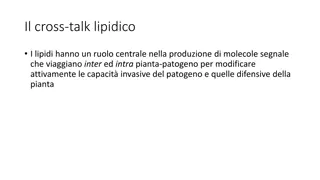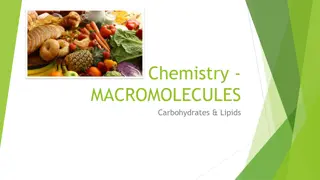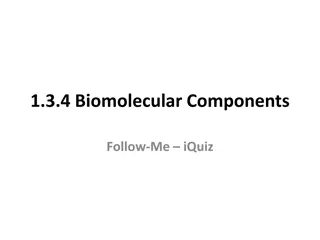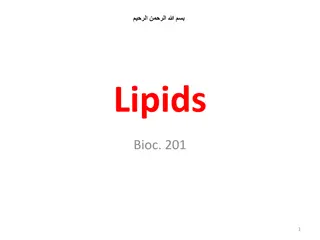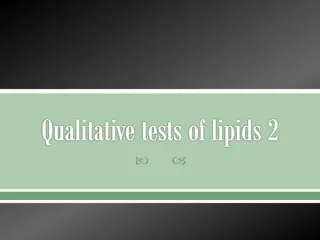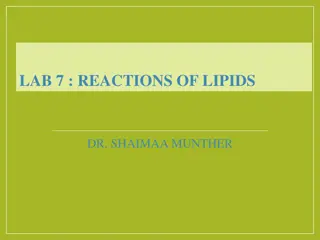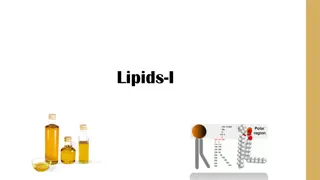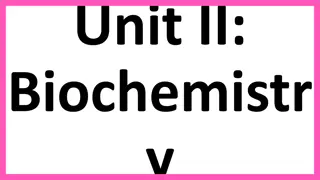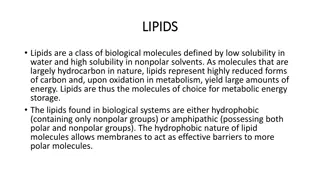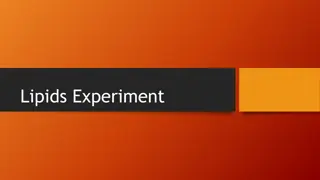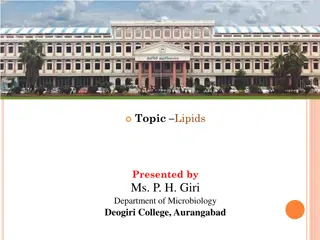Overview of Lipids: Classification, Types, and Test
Lipids are a diverse group of compounds that play crucial roles in biological systems. They include simple, derived, and compound lipids, such as fats and waxes, which regulate cellular activities. Understanding the types of fatty acids, specific tests for unsaturated and saturated fatty acids, as well as the emulsion and chemical substances involved in lipid interactions, provides insights into their properties and functions in living organisms.
Download Presentation

Please find below an Image/Link to download the presentation.
The content on the website is provided AS IS for your information and personal use only. It may not be sold, licensed, or shared on other websites without obtaining consent from the author.If you encounter any issues during the download, it is possible that the publisher has removed the file from their server.
You are allowed to download the files provided on this website for personal or commercial use, subject to the condition that they are used lawfully. All files are the property of their respective owners.
The content on the website is provided AS IS for your information and personal use only. It may not be sold, licensed, or shared on other websites without obtaining consent from the author.
E N D
Presentation Transcript
Lipids Lipids Lipids are a heterogeneous group of compounds. insoluble in water and soluble in organic solvent such as (alcohol, acetone).
Classification of lipid Simple Simple lipid lipid Derived Derived lipid lipid Compound Compound lipid lipid Produced when hydrolyzed simple or compound lipid Exp. Cholesterol Ester of fatty acid containing another group Exp. glycolipids fatty acid and glycerol give ester of fatty acid Exp. Fats, waxes
fats are lipids that solid at room temperature. oils are lipids that liquid at room temperature. Regulate activities of cells and tissues
Types of fatty acids Types of fatty acids
Specific test for (unsaturated fatty acid). Depends on reaction of iodine reagent with double bond of fatty acid. Produced colorless (+). + -
Reaction test Specific test for fatty acid (saturated and unsaturated). Depends on fatty acid decolorizes the red color of phenolphthalein reagent because it have free carboxyl group . Produced colorless (+).
Copper acetate test Specific test for distinguish between TG, unsaturated and saturated fatty acid. Depends on reaction of (Cu+2) with (COOH) of fatty acid. Neutral unsaturated saturated
Emulsion when lipid shake with water then broken down to give minute particles which is immiscible with water. Because oil particles will get together and carried above the surface of water. So add soap to this mixture, oil will be miscible in this solution (oil + water + soap) to give emulsion permanent.
Chemical substances Chemical substances that make emulsion permanent are: ( (soap, proteins, bile salts and phospholipid) ).
Lipid tests 1- iodine Test : 2 - reaction Test : (test for general fatty acid) (1 ml) of liquid (4 drops) of reagent 3- copper acetate Test : (distinguish between lipids) (test for unsaturated fatty acid) (1 ml) of lipid (4 drops) OF reagent (1 ml) of liquid (1 ml) OF reagent, shake, let stand oleic (-) TG (+) (+) (-) TG Saturated unsaturated palmitic Brown Purple (palmitic) 4- emulsification of oils: 5- cholesterol test: (1 ml) of lipid (2 ml) of water Salkowski test (2 ml) of cholesterol in dry test tube (2 ml) of H2SO4 (con.) Mix, let stand Few drop of soap and shake
Unknown ( (palmatic Reaction Test : (1ml ) of unknown (6 drop) of reagent Unknown palmatic , TG, Oleic) , TG, Oleic) Reaction test Copper acetate test Iodine Test : (1 ml) of unknown (4 drop) of reagent ( (- -) ) (+) (+) neutral neutral Fatty acid Fatty acid Iodine test Copper acetate Test : (1 ml) of unknown (1 ml) of reagent, shake, let stand (+) (+) ( (- -) )


